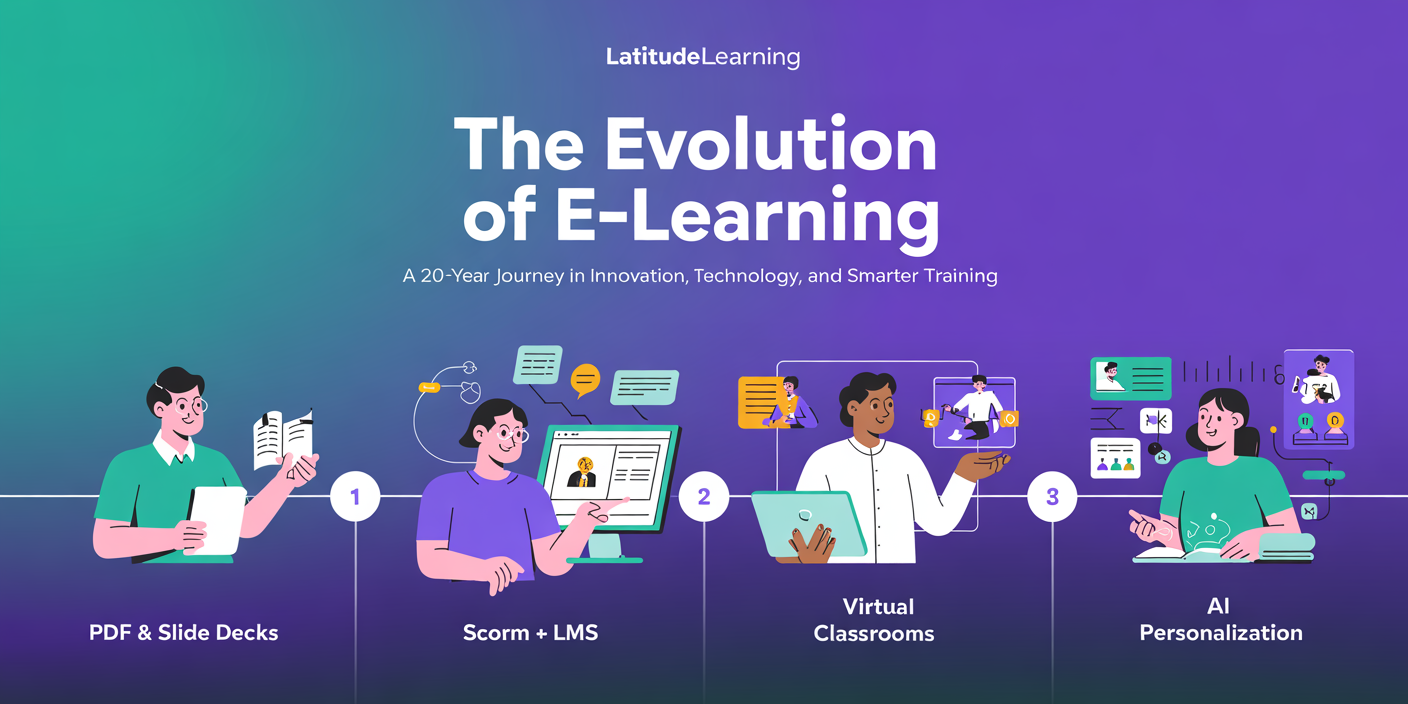Choosing a learning management system (LMS) to support the training program for your extended enterprise is a lengthy process. Any new enterprise software acquisition at a company is usually a three-year commitment. When you include the amount of time it takes to select, negotiate an agreement, and implement that system, you’re probably looking at a four or five-year commitment from start to finish.
You hope that you made the right choice, but whether it is the tool you selected, the partner that is implementing it, or failure on the promise of its capabilities, sometimes things don’t go as planned. The complexities that OEM dealers and resellers experience and the goals that you want your training program to achieve aren’t supported in the way that you were hoping they would be. And now you need to make a change, either in the tool you selected or in the way you run your program, and neither approach is optimal
You’ve made such a heavy investment to implement a system for your training program, both financially and with your time. To discover that you’ve ultimately made the wrong choice is a painful experience. Yet, you find yourself back at the drawing board, wondering if it’s worth it to invest your time and money into a system that will be able to provide the support your organization needs.
So now what do you do? How can you make the case to your higher-ups that you need to go through this process yet again?
Nailing Down The Elements That Don’t Fit
In order to make a compelling business case to convince your executives that you need the time, money, and resources to devote to a new LMS, you need to have a clear definition of why it doesn’t work and how these limitations are impacting the business.
What is it about the current system that isn’t supporting the training and operations of your organization? What are the limitations of the current system? Is it an administrative pain that requires excessive time for simple tasks? Is the system causing organizational pain that makes it difficult to administer the training or deliver the training in the appropriate time frame? Is it a hassle to update the system or to get a vendor to help you with your changes?
Articulating these pain points and the impact on the business is critical to making a business case to switch. Having these pain points presented in a way that provides a measurable output is also helpful in building a business case for the transition. If you can measure the amount of manhours that are wasted on tasks that do not drive your business goals forward, you make a case for resources to be reallocated for a better LMS.
Making The Case To Switch
When presenting the business case to your executives, you will have the most compelling argument if you can outline why the resources required to switch will outweigh the costs of keeping the current system.
If you focus on the man-hours that are spent navigating the myriad of workarounds to manage your training program externally from your system, or excessive export and import processes that are required just to give you a snapshot of training data, or the added time it takes to ensure that the data was analyzed correctly and that your reports are accurate enough to make business decisions based on – you have made the case that the system is inefficient and it is exhausting the limited resources that you have.
So if it is costing you significant additional effort to simply run your training program, what does that amount to, man-days, man-weeks, or man-years of effort? How does that equate to dollars and cents, and what does that equate to over time? What is the cost of a new LMS, and when will that investment make up for the additional man-hours wasted on simple functions or other pain points? Also, how will this investment improve the training program and have an impact on the overall organization? Will this allow us to get more value and do more with the program in the long run rather than “dumbing” it down to meet the capabilities of your current toolset?
With answers to these questions already outlined, you will be able to make a compelling business case for why the investment in a new LMS is worth it.
What About The Impact On IT?
There’s no doubt that switching a major piece of technology will impact your organization’s IT department. This will cost additional resources and time to ensure that the switch is seamless and supported and that no data is lost in the transition.
You want to make sure that the choices you are making will simplify the objectives on the technology front to get buy-in and support from the IT department executives. How will the new system address the current challenges? Will this simplify IT operations in the long run? Does the new system meet your IT department’s security requirements, and is there a plan for ongoing and evolving application security and data privacy requirements?
Crossing The Barrier With Your External Partners
If you make a compelling business case for your executives and your IT team, you still have the hurdle of your external partners. Adoption and participation of new systems can always pose a challenge for your partner network. Why is uprooting the old system worth it to them? What benefits will this new system offer your partners to ensure that they adopt and participate in the newly proposed system?
Will the new system be better able to track technician training to align with warranty repairs, reduced parts costs, and fixed first-time results to support business outcomes? By understanding what your partners need to be successful and meeting those needs with a new LMS, you will be better able to jump the hurdle with your partner network.
Additionally, you will need to have a plan in place for them to retain the functionality that the LMS is currently providing them and not lose any traction from a training and compliance perspective through the transition. You don’t want to simply replace one system with another, but give them time for a proper transition and communicate with them throughout that process.
Making Good On Your Promises
Once you’ve gotten buy-in from your executives, you need to have a plan in place that will help you show how you met the objectives with the new LMS that were proposed from the beginning.
When your new system is implemented, you can come back to the table with the return on investment and detail exactly where you saved money, reduced headcount, and increased efficiency. You can show where your training program is now moving the needle for the overall organization and show that the investment and energy that was put into making the transition was worth it in the long run.
When you demonstrate the power that the right training program has on your extended enterprise, it gets you a step beyond managing training in your organization. If you can show how a proper training program drives the business forward, you can generate more interest in devoting resources to training.
Making The Right Choice
Without the right platform, your organization can experience turmoil and exhaustion of finite resources. Making the right choice on an LMS for your extended enterprise is critical to your bottom line.
If you’re all tangled up in an LMS that isn’t serving your organization in the way you need, consider making the switch to LatitudeLearning. Extended enterprises are unique in their needs for an LMS that supports dynamic skills-based learning and accreditation. You need a software provider that understands these complexities and can cater to the unique needs of your organization and your partners.
Switching LMS providers can result in extensive changeover costs. Don’t get caught up in the wrong LMS! Download our ebook on Extended Enterprise Learning today and learn how it can help you build capability and drive performance across your organization’s entire value chain.





